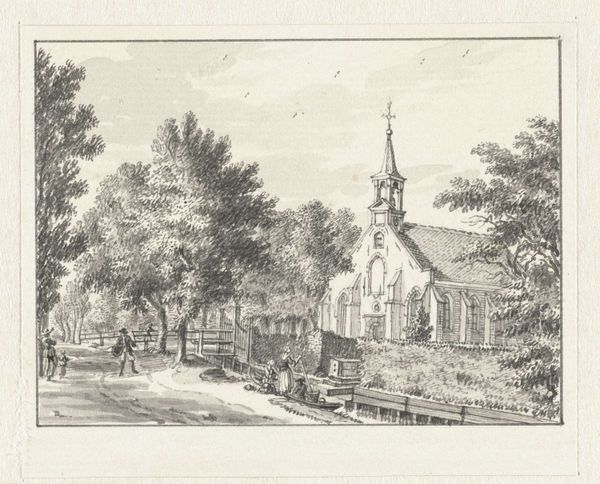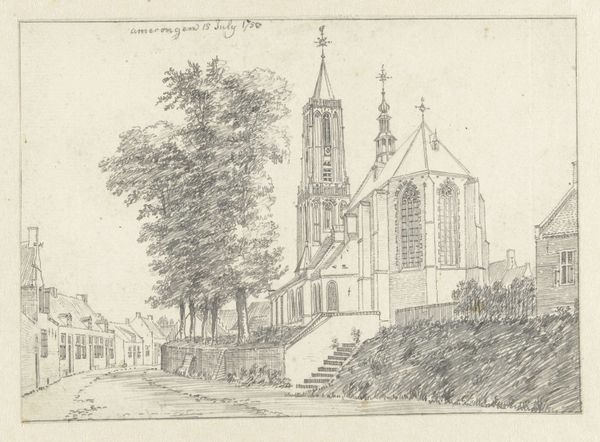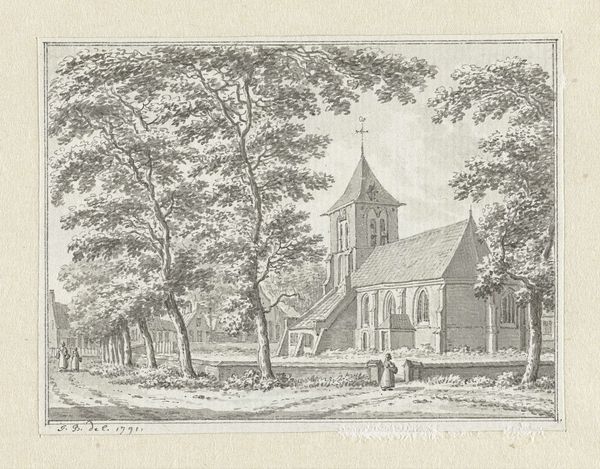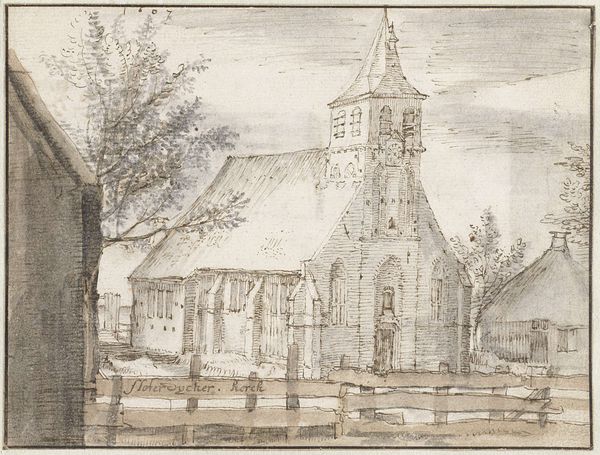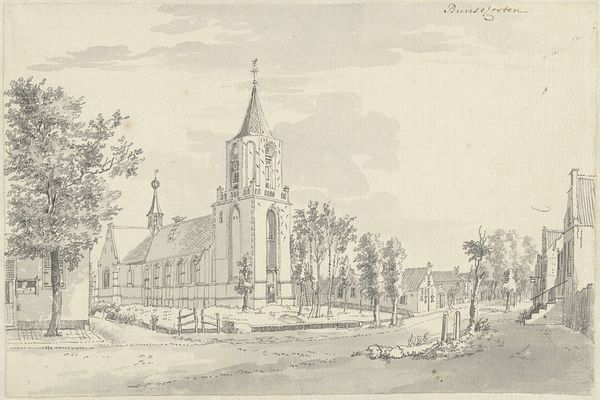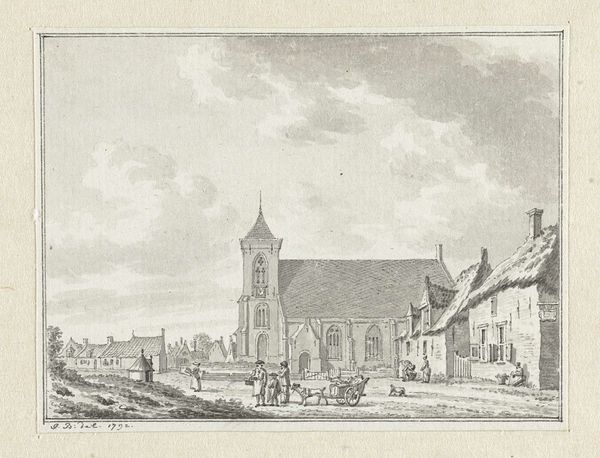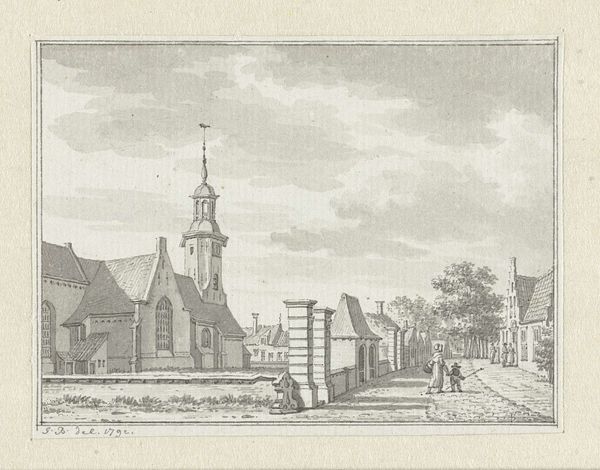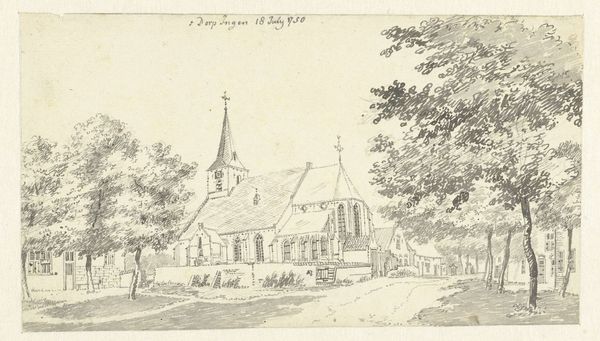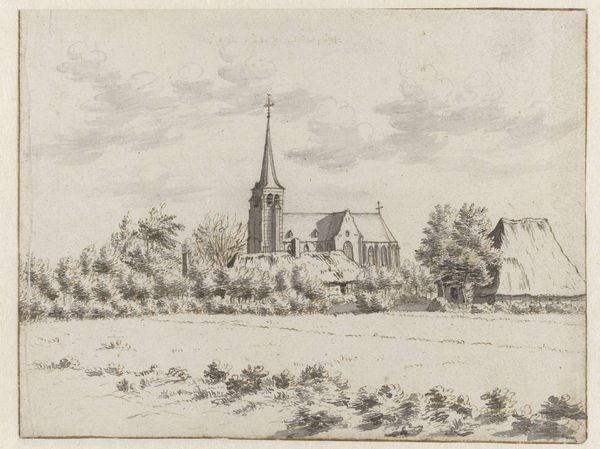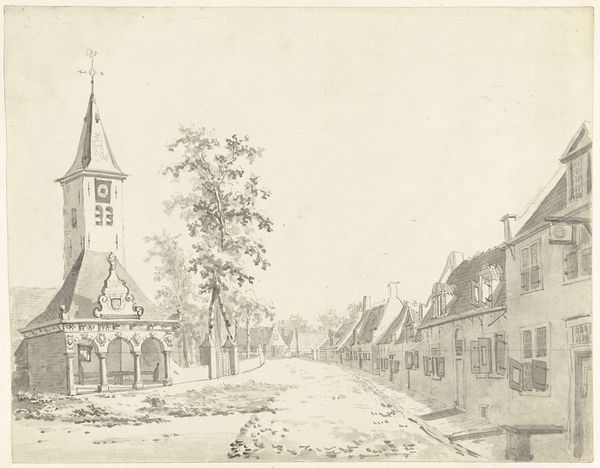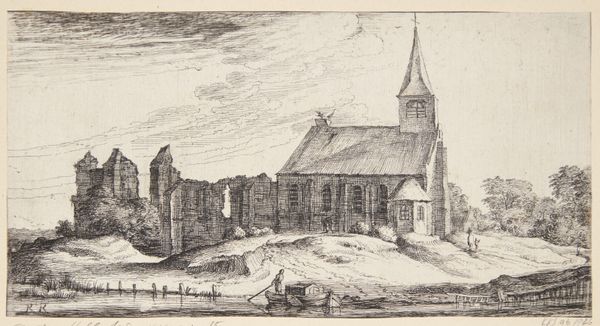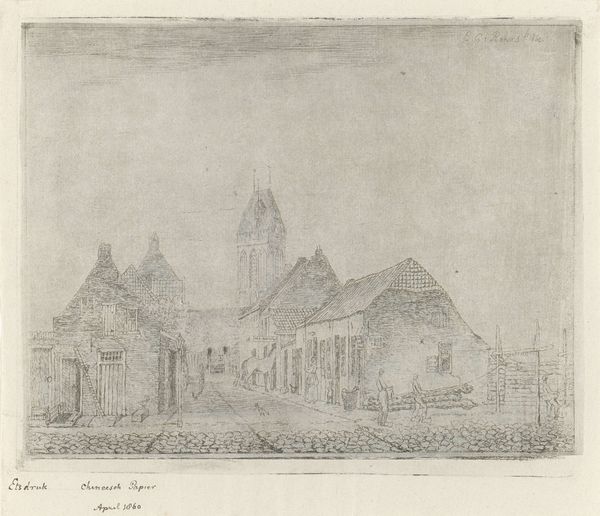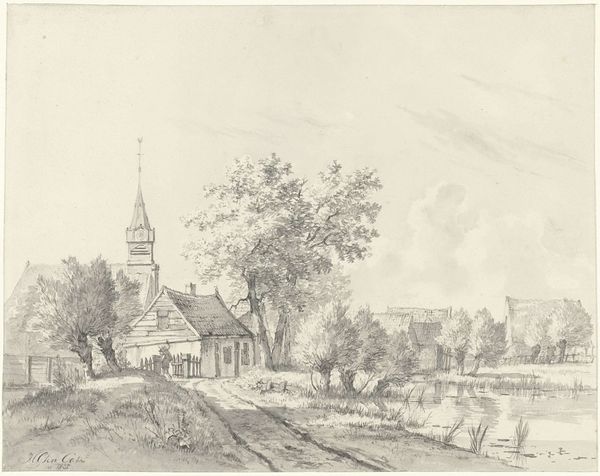
drawing, etching, paper, ink
#
drawing
#
baroque
#
dutch-golden-age
#
etching
#
landscape
#
etching
#
paper
#
ink
#
cityscape
Dimensions: height 80 mm, width 105 mm
Copyright: Rijks Museum: Open Domain
Hendrik Spilman etched ‘The village of Twisk’ in 1735. Note the level gaze that the artist has cast on the Dutch village. This is a seemingly simple image, yet it resonates with the cultural values of the period. Spilman was a Dutch artist working during a time when the Dutch Republic was a major economic and cultural power. The image celebrates the beauty and tranquility of rural life, a common theme in Dutch art of the time, reflecting a sense of national pride and appreciation for the Dutch landscape. You can see the village church prominently featured, indicating the importance of religion in community life. Through city archives, local histories and period newspapers we can learn much more about the specific social structures and political debates that animated life in places like Twisk. This reminds us of the role of art historians in uncovering the complex and contingent meanings of art.
Comments
No comments
Be the first to comment and join the conversation on the ultimate creative platform.
